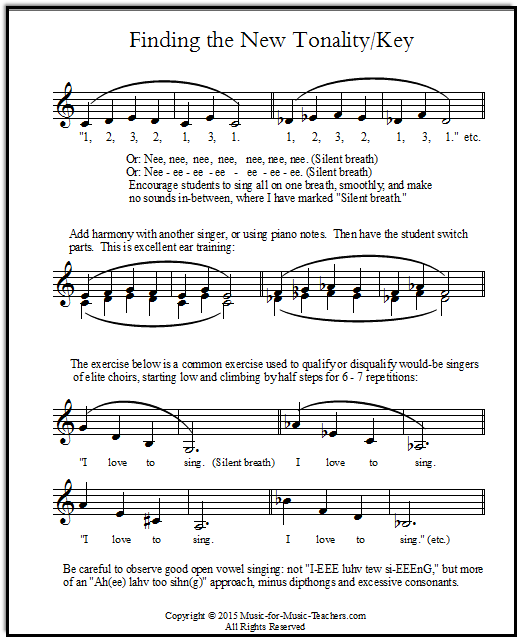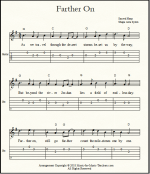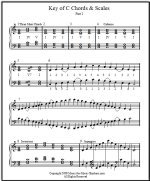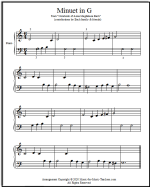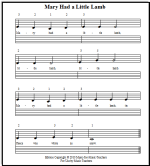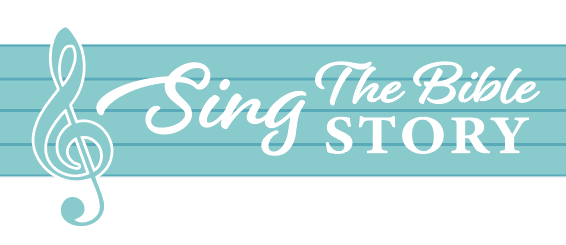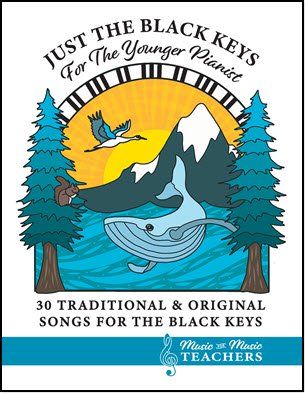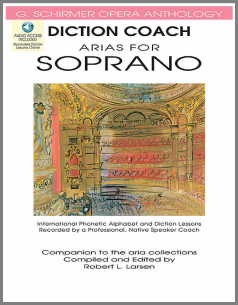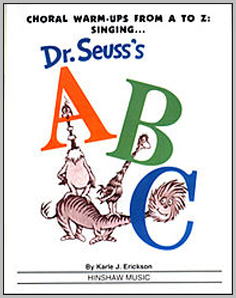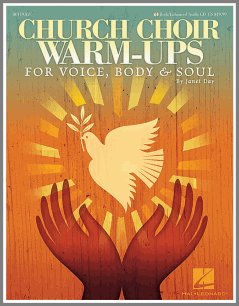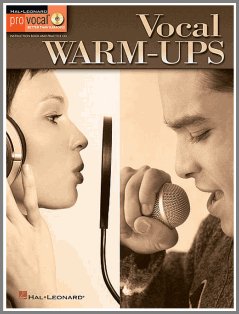Singing: Vocal Technique for Hearing New Keys
Singing: Vocal technique to help your students hear a new tonality. Download a vocal-exercises-for-singing PDF, FREE!
A lot of what happens in music, and in vocal warmups, is a matter of the inner ear memorizing repeated sound patterns and pitches.
After hearing them over and over again, students gradually begin to ANTICIPATE the next sound. In the first singing pattern below, the first three notes of a major scale are slowly sung, establishing the "Do-re-mi" for that key:
Please scroll down the page for the download links.
At first, your student may have great trouble singing, then moving a vocal warm ups pattern up or down a half step, but repetition will solve that problem!
Admittedly, the final pattern on this page is QUITE DIFFICULT for young singers - (that's why it is used as an elimination technique for "Honor Choir" in my state (Alaska) and perhaps your locale as well...).
Singers must think up not just an octave above each descending arpeggio (8 - 5 - 3 - 1), but an additional half step - very hard! Then they must descend two difficult intervals in the new tonality, a fourth and a minor third. But this arpeggio will refine and hone their ability.
An excellent way to re-orient your singer to each new tonal center is to play chords on the piano to accompany them. I will usually strike each fresh "I" (One) chord just before the start of each new sung pattern. "La, la, la, la, la..." (new chord). "La, la, la, la, la..." (new chord).
Sometimes the pattern's rhythm and melody will allow for the use of the V7 chord as well as the I chord, and this helps establish a strong feeling for the new key.
However, with the last pattern on this page of warmups, the descending arpeggios, I try to wean my young students off the need for chords as soon as may be, since this exercise must be sung a capella ("without accompaniment") in the audition recordings.
They are not even to hum the next note ahead of time - it must be "thought" in their heads and then sung aloud correctly.
So when working on that pattern, we will go through it once with "helper" tones; each key, or maybe just the top one or two notes, played along with them. Then the student sings the pattern again, but the second time, I wait until AFTER they sing each tone to softly press the piano key.
If they sing the pattern a third time through, I give them only the very first starting note, and then pantomime each arpeggio with my fingers over the keys of the piano, but not striking. (This helps me keep track of where the singer ought to be!)
When they reach the final arpeggio (the seventh arpeggio), we compare notes to see how they match up.
On my Star-Spangled Banner page is an exercise that uses the same idea:
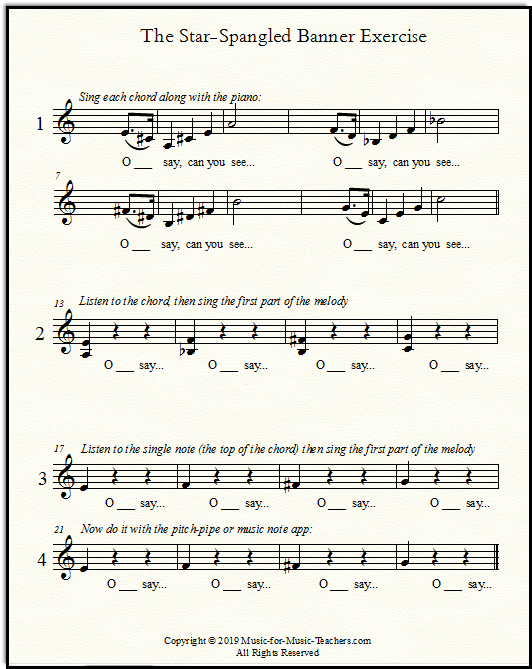
The link to the vocal exercise:
Print free singing vocal technique page
Dianna:
Your website is a light in the darkness. THANK YOU for all you do in helping to spread the love of music. It matters!
Recent Articles
-
Moonlight Sonata in Cm
Hello! Thank you for sharing the introduction to Beethoven's Moonlight Sonata in C minor! It will be a good trial for a certain student. Can you make -
Farther On, a Beautiful Shape-Note Hymn: vocal ensemble & instruments
Farther On is a beautiful Shape-Note hymn in the Sacred Harp tradition. Download this free hymn sheet music for ensemble, guitar, piano, & lead sheet. -
12 Major Scales Free Download for Piano: Chords, Arpeggios & Scales
12 major scales & chords: free, printable downloads. One & two-octave scales, I, IV & V chords & inversions & arpeggios, & a new PART 2! -
Bach Minuet in G Piano Music: Arrangements for All Levels
The Bach Minuet in G is a famous piece that kids enjoy playing - now with six arrangements, all of your students can conquer this piece. -
Mary Had a Little Lamb for Beginner Piano: Learn How to Add Chords
There is so much you can do with Mary Had a Little Lamb! As piano music for kids, it is unbeatable for showing them how to use chords.
Interested in songs from the Bible for your students or church? Check out my other website, SingTheBibleStory.com!
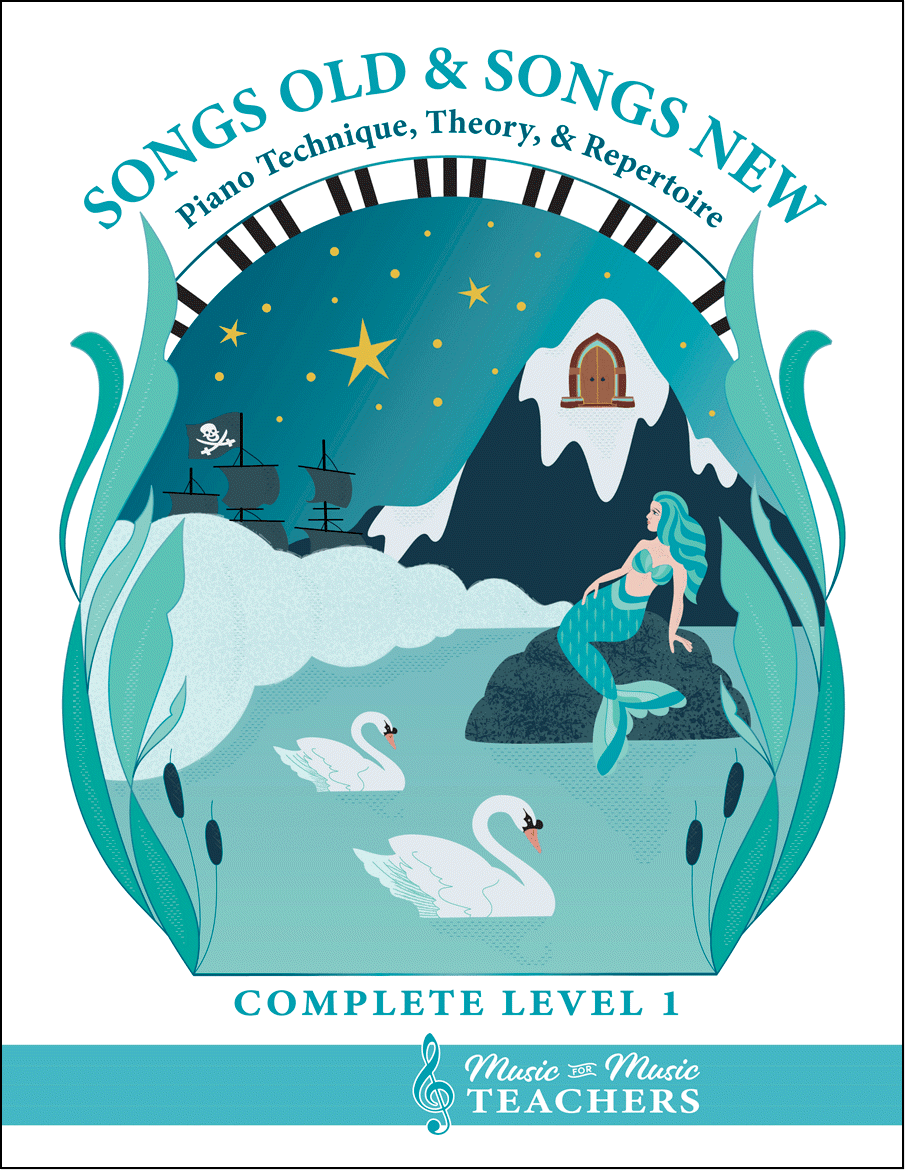
All the first-year material I give my beginner students.
Piano keyboard sheets, scales, chords, note-reading exercises, and over 256 pages of music!
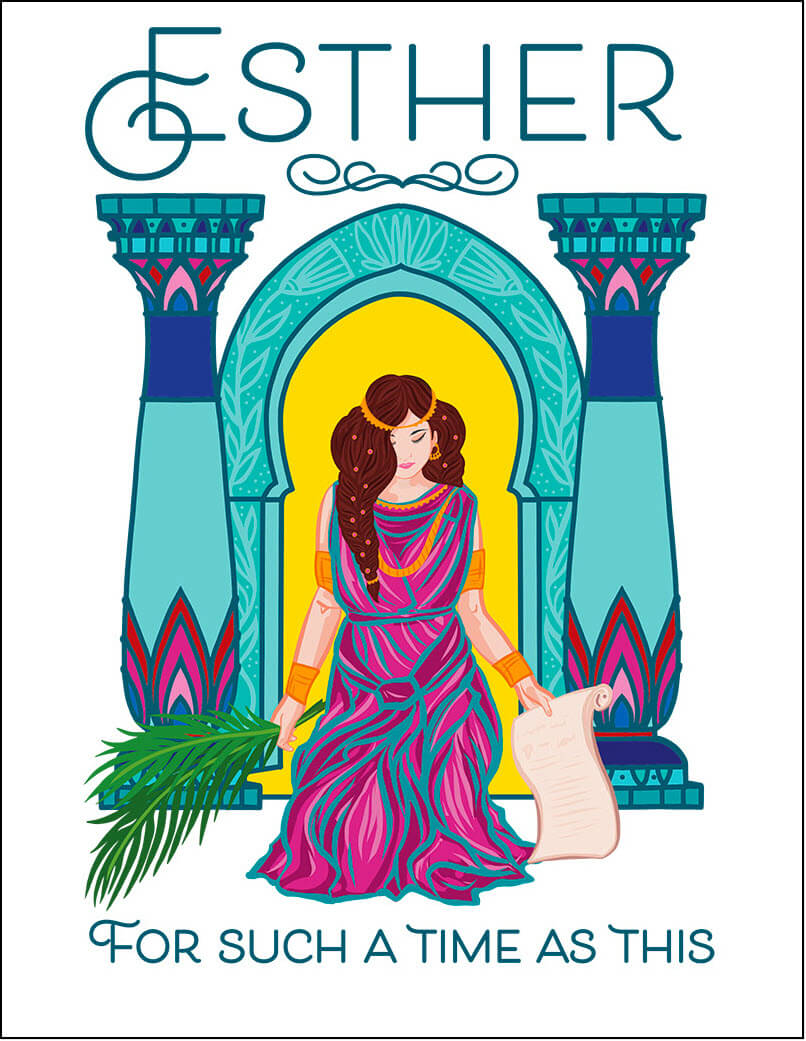
This beautiful song book for piano & voice "Esther, For Such a Time as This", available as a digital download, tells the riveting story of the time when Jews in ancient Persia faced a foe named Haman, and how a brave young queen risked her life to save her people.
A good choice for a singing story-teller, an operatic group, a short theater production, or a class of children!
This book is also available from Amazon as a paperback.
This book is available as a digital download from this site. Visit this page to see some free examples from the book.
It is also available from Amazon as a paperback!
This is the perfect easy start for little pianists.
And when they start reading white-key notes on the staff, this is a fun easy resource to say each week, "Choose a new black-key song at home this week and figure it out to show me next lesson!" They will be spending more time at the piano.
A perfect read aloud storybook
for little boys or girls.
The Adventures of Tonsta highlight the travels of a very young boy with a good heart, who goes about helping folk in trouble.
With a red cap on his head and a sack of tools slung over his shoulder, Tonsta seems to meet people in distress wherever he goes.
Lots of trolls in this book - including one who gives him a Christmas gift!
Laura, Australia:
Dana, I just needed to write to you to tell you that this is a wonderful website.
I am a cellist and classroom teacher who has started taking vocal ensemble with no prior knowledge of vocal training... and I've now been asked to teach a vocal student.
So here I am; it's like your website has been written for me! Thank you for putting in the time to compile the repertoire, I look forward to'working on it with my student.
Amber:
Thank you! THANK YOU!!! For keeping the beautiful art of Opera alive!
I stumbled upon this site and I'm so happy I did!
Paulette:
Thanks so much for your amazing website. :0 Can't wait to share with my students. I bought the more difficult arrangement of "The Moldau". Seems like a great recital piece for some lucky student!!
Comments: Do you have a story or a question about music teaching? Share it!
Please note that all comments are moderated, and will not appear until I have approved them. Also, IF YOU ARE ASKING FOR MUSIC THAT IS NOT IN THE PUBLIC DOMAIN, YOUR REQUEST WILL BE IGNORED. That's pretty much any music written in the last 75 years...
About the Author

Hi, I'm Dana! (Say that like "Anna".) I'm the owner of Music-for-Music-Teachers.com, and a newer site, SingTheBibleStory.com.
Like some of you, I've been playing the piano since early childhood, and have added a few other instruments along the way, plus an interest in arranging and composing music.
You can find out more about me and the reason for this website at my About Me page.
